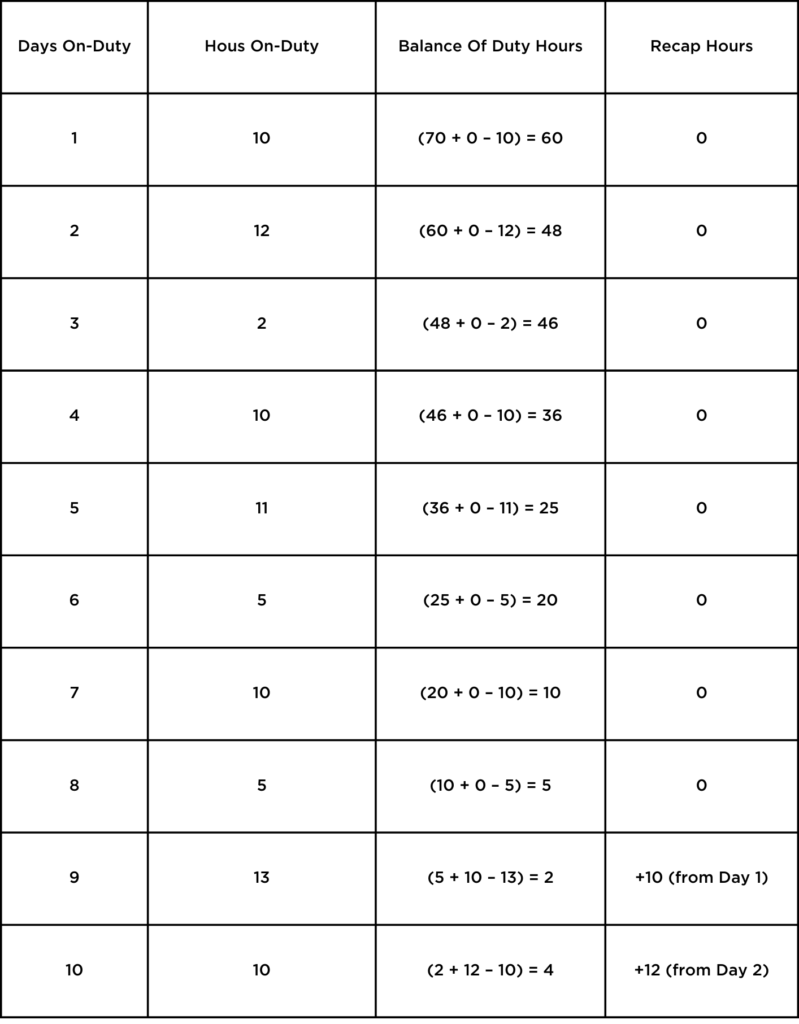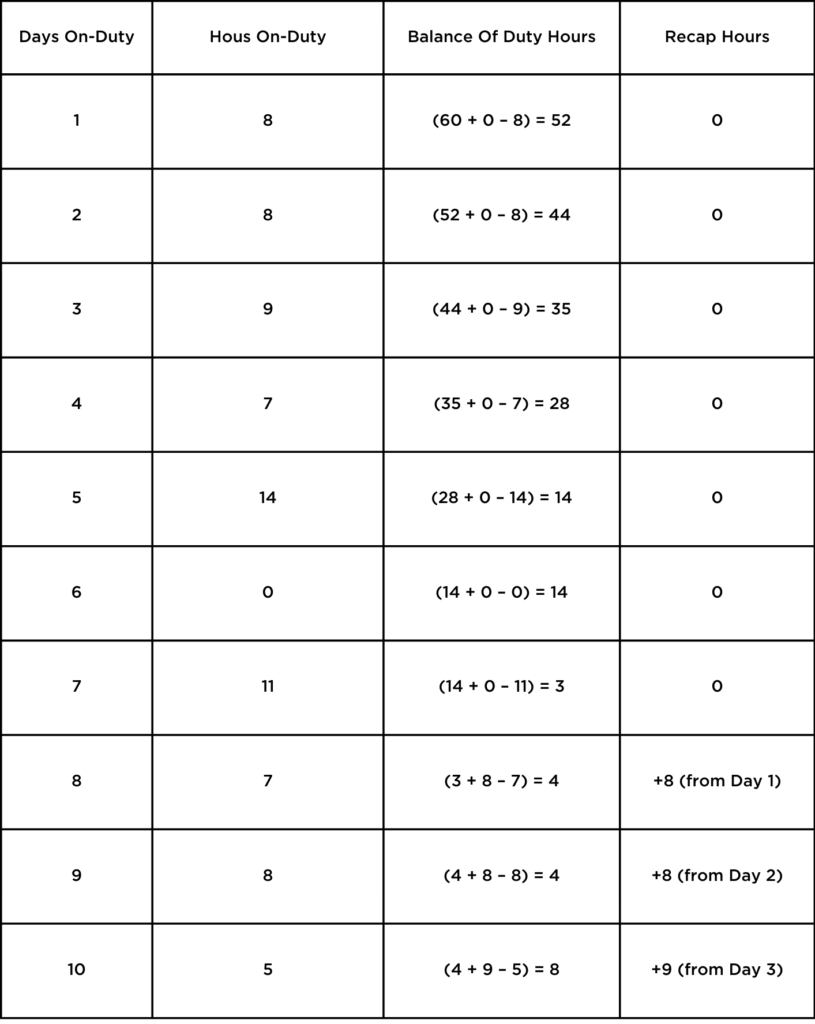Part of being a truck driver means spending a lot of time on the road. Not only is this detrimental to their health, but it also poses risks to their safety.
And that’s when the Hours Of Service (HOS) regulations enforced by the Federal Motor Carrier Safety Administration (FMCSA) come in — they are the ones responsible for setting the number of hours that commercial truck drivers are permitted to operate their trucks.
This guarantees that they get adequate sleep, lowering the risk of accidents caused by exhaustion and raising road safety standards.
Truck drivers are required to drive their vehicles for a maximum of 70 hours on 8 consecutive days if they work 7 days a week, or 60 hours in 7 consecutive days if they work 6 days a week. Stated differently, they can work an average of 8.5 to 10 hours a day while driving.
Since many drivers inadvertently surpass the time limits owing to delivery schedules, traffic, mechanical issues, or other circumstances, it is regrettable that following these stringent standards is difficult.
Therefore, procedures such as scheduling recap hours can improve drivers’ flexibility. To make up for lost time during the current duty cycle, recap hours are on-duty hours from the prior duty cycle.
We’ll go into more detail about recap hours in this post, outlining their main advantages for drivers as well as how to calculate them. We’ll also give readers advice on when to use recap hours most effectively and pointers on how to always maintain compliance.
But First, What Are Recap Hours?
Recap hours in the trucking industry are extra time allotted to commercial vehicle drivers based on their prior duty cycle on-duty hours. The hours that they spent on duty the day before their current duty cycle are used to calculate these hours.
Put another way, depending on whatever HOS duty cycle a driver is following, it refers to the number of hours they worked seven or eight days before the current day.
These additional hours increase the driver’s available work time, enabling them to maximize their production while still adhering to HOS rules. It can also lower the likelihood of accidents and de-stress drivers with busy schedules.
Drivers can reset their duty cycle by taking 34 consecutive hours off duty to rest; it is crucial to note that they are not obligated to use recap hours. They can resume their 60- or 70-hour duty cycle from day 1 upon their return.
To guarantee compliance, drivers and freight companies using recoup hours must keep precise time records. In the parts that follow, we’ll go into greater information about this and offer advice on how to better manage your recap hours.
How To Calculate Recap Hours?
For most people, understanding and computing recap hours might be difficult, but we will walk you through it step-by-step and use examples to help you understand. To determine recap hours, drivers and trucking companies often add up all the hours they spent on duty throughout the previous seven or eight days.
A driver can lawfully operate a truck for an extended period within their current cycle by adding these hours to their existing balance of duty hours. For example, drivers who work regularly for eight hours a day can extend their current cycle by eight hours past midnight on the seventh or eighth day.
Below is a case study that might help you understand this more.
Case Study
With a 70-hour limit in eight consecutive days and a 60-hour limit in seven consecutive days, the two tables we’ve produced below each show how to recap hours operate.
For this case study, let’s assume that a truck driver employed by a national logistics company works 10 days in a row within the 70-hour limit by using recap hours to comply with the HOS requirement.

The driver chose to take a 34-hour rest to reset the duty cycle, as you can see from the chart above because there are insufficient hours left (a balance of 6 hours on the eleventh day).
Here is another case study demonstrating how a different truck driver working for the same company can adhere to the 60-hour limit for ten days in a row.

As shown in the table above, the truck driver has eight hours left at the end of the tenth day. This implies that before restarting his duty cycle, the driver can work a few more days using recap hours.
The Importance Of Compliance
It is important to abide by all HOS rules set forth by the FMCSA, whether you are a truck driver or a trucking firm. When law enforcement agents catch drivers working past the regular service hours, they may face severe penalties or even have their businesses shut down. The usual range of fines for non-compliance is $1,000 to $16,000. Transporters of hazardous materials may face fines exceeding $75,000.
When Are Recap Hours Useful for Truckers?
Recap hours provide drivers additional time to move cargo, but they should be utilized carefully. The ideal conditions for hourly recaps are listed below:
- If There Are Extra On-Duty Hours: Use recap hours to optimize workload distribution and create more flexibility in your schedule if you are one of the many drivers with extra on-duty hours during your 7 or 8-day cycle.
- Peak Periods: When you have a lot of shipments, this is the ideal time to use recap hours. Working longer hours can make it easier for you to manage freight, fulfill deadlines for deliveries, and complete regular administrative duties.
- When Appropriately Rested: Drivers who have had enough sleep and have excess on-duty time during their cycle might utilize recap hours to carry out load deliveries. They must assess their health, though, to reduce stress and avoid mishaps brought on by exhaustion.

The Best Methods For Monitoring Recap Hours
Keeping track of their recuperation hours might mean utilizing various technologies and techniques. Usually, how truck drivers use these technologies is determined by their personal preferences or company policies.
How to Use Electronic Logging Devices
Most commercial trucks in the US are required to have Electronic Logging Devices (ELDs). In addition to mileage traveled, location, and engine performance, they automatically log driving hours, rest intervals, and on-duty time.
They enable carriers to precisely and instantly monitor the HOS of their drivers. Recap hours can be automatically recorded and calculated with many of the features found on modern ELDs.
Making Use of Mobile Apps
Numerous mobile applications that support iOS and Android can be found that are either made especially for this purpose or are capable of recording recap hours. Many perform duties akin to those of ELDs. Additionally, they are portable, enabling drivers to use cellphones or tablets to track their hours and make sure they comply with HOS rules.
Utilizing Log Books
When ELDs are not required (for older truck models with engines developed on or before the year 2000), many conventional or experienced drivers and companies track their hours using logbooks or paper logs.
Although drivers avoid the high upfront expenses associated with ELDs, this manual approach is prone to human mistakes. This makes record-keeping more difficult for certain truckers who use log books.
Use Fleet Management Software
To digitize operations, most modern trucking companies use robust fleet management software. These technologies can track, record, and manage all employed driver’s hours.
Numerous platforms include integrations with ELDs that facilitate the retrieval of real-time tracking data. This allows carriers to compute recap hours and streamline driver compliance monitoring.
How To Observe These Rules
Truckers wishing to track and manage recap hours can find ease in the tools and techniques in the preceding section. Truckers still have to take the necessary precautions to abide by state and HOS laws, though. We go over some very useful advice to guarantee compliance below.
- Leverage Technology – Adopting advanced technological solutions like ELDs and mobile applications to reduce human errors when recording and calculating recap hours can be beneficial for accuracy and reliability.
- Self-Audit – Take your time to double-check your records. Ensure they’re accurate, current, and complete. Doing so will demonstrate your strive to comply with laws and regulations. Moreover, accurate records will help you make better decisions when leveraging additional time to haul cargo.
- Plan Ahead: One of the most important things a truck driver can learn and master is proactive planning. To lessen the effects of traffic, inclement weather, and other problems, it can assist you in scheduling, avoiding problematic routes, and selecting the optimal hauling times. Making the most of recap hours and adhering to HOS standards can both be encouraged by proactive planning on the part of drivers.
- Retain Records: To meet FMCSA retention requirements, maintain current records for a minimum of six months. Data-driven decision-making is made possible by appropriate record management, which also shows compliance.
- Set Alerts & Notifications: To be informed when you’re about to surpass the HOS time limitations, you can also think about setting up alerts or notifications on your ELD or mobile application.
If you have questions on recap hours or you want more content like this, leave a comment or visit our website today!



